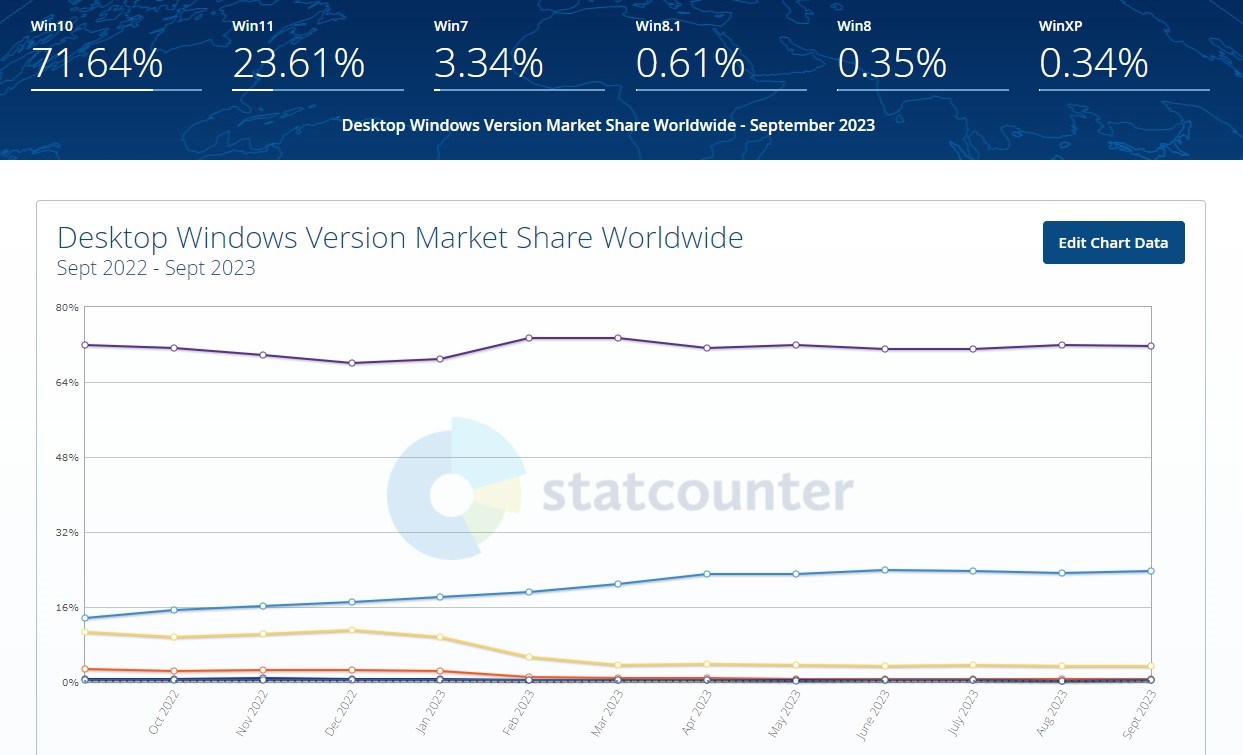 Although Windows 11 was released two years ago, it still has not caught up with the popularity of Windows 10. StatCounter shared the usage rates of Windows-based operating systems. Published data shows that Windows 10 has a 71.64% market share worldwide. However, Windows 11 holds only 23.61% of the market.
Although Windows 11 was released two years ago, it still has not caught up with the popularity of Windows 10. StatCounter shared the usage rates of Windows-based operating systems. Published data shows that Windows 10 has a 71.64% market share worldwide. However, Windows 11 holds only 23.61% of the market.According to StatCounter’s analysis, which takes into account all Windows operating systems from the last two decades, including versions 11, 10, 7, 8/8.1 and XP, Windows 10 maintains its lead. Right behind Windows 10 and Windows 11 is Windows 7 with a 3.34% market share. This is followed by Windows 8.1 with 0.61%, Windows 8 with a modest 0.35%, and Windows XP with 0.34%.

Windows 11’s spread rate remained low
Although Windows 11 is currently the second most popular Windows operating system, its adoption rate is not as high as Windows 10. Windows 10 captured 32.84% of the market within two years of its launch in 2015. This corresponds to a usage rate 10% higher than Windows 11’s current market share. So Windows 10 became widespread much faster.
One of the main reasons for Windows 11’s low market share is that users have different opinions. The replacement of some Windows 10 elements, such as the updated Start menu and taskbar, caused criticism when the operating system was released. Additionally, increased system requirements, such as the need for a TPM module, also created discomfort. However, workarounds were later offered for machines without TPM.